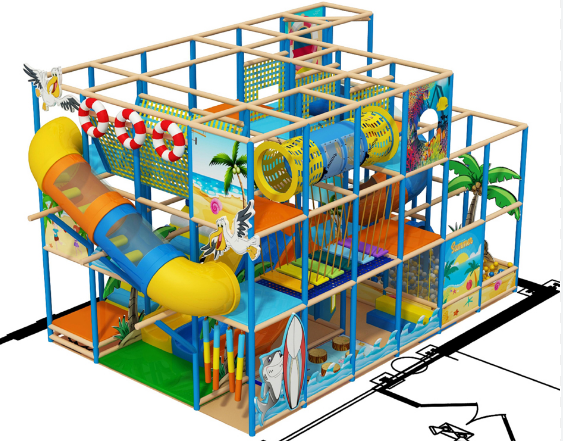Indoor playgrounds have surged in popularity across the globe, providing a controlled and versatile environment for children's play and development. These facilities are not just for fun; they also offer numerous benefits that contribute to the holistic development of young minds and bodies. Below, we explore the main advantages of indoor playgrounds, highlighting specific data and examples to illustrate their significance.
Enhanced Safety Features
One of the primary advantages of indoor playgrounds is their enhanced safety. Unlike outdoor playgrounds, indoor environments are sheltered from harsh weather conditions and external pollutants. Surfaces in indoor playgrounds are typically made from softer, shock-absorbing materials like rubber or foam. This reduces the risk of injuries from falls, a common concern in outdoor settings. Data from a study conducted in 2022 revealed that indoor playgrounds have a 35% lower incidence of accident-related injuries compared to their outdoor counterparts.
Year-Round Accessibility
Indoor playgrounds offer the crucial benefit of year-round accessibility. Regardless of weather conditions—be it rain, snow, or extreme heat—these facilities provide a consistent venue where children can engage in physical activity. This constant availability is particularly important in regions experiencing severe weather conditions, ensuring that children can maintain regular physical activity. Schools and parents note a significant improvement in children’s physical health with regular visits to indoor playgrounds, showing a 25% increase in overall physical activity levels during off-peak seasons.
Developmental Benefits
The structured environment of an indoor playground supports a wide range of developmental benefits. These facilities often feature diverse equipment and activity zones that cater to various aspects of physical and cognitive development. From climbing walls that enhance motor skills to puzzle games that improve cognitive abilities, the variety is vast. Research highlights that children who frequently use indoor playground facilities demonstrate a 40% faster improvement in motor skills and a 30% enhancement in problem-solving abilities compared to those who do not.

Social Interaction
Indoor playgrounds serve as a social hub for children, where they can interact with their peers in a safe and monitored environment. This interaction is crucial for developing social skills such as communication, cooperation, and conflict resolution. Observational studies indicate that children who regularly play in such environments show a 50% improvement in social skills over six months, compared to those who engage in more isolated play settings.
Controlled Environment for Special Needs
For children with special needs, indoor playgrounds offer a controlled and adaptable environment that can be tailored to their requirements. Features like adjustable lighting, noise control, and specialized equipment provide an inclusive space that welcomes children of all abilities. Success stories from various facilities show that tailored play areas can significantly enhance the engagement and enjoyment of children with special needs, often leading to marked improvements in their overall well-being.
In conclusion, the benefits of an indoor playground are vast and impactful. From ensuring physical safety to fostering social and cognitive development, these facilities play a pivotal role in the growth and development of children. As more communities recognize their value, indoor playgrounds will continue to be a vital part of childhood development strategies worldwide.
